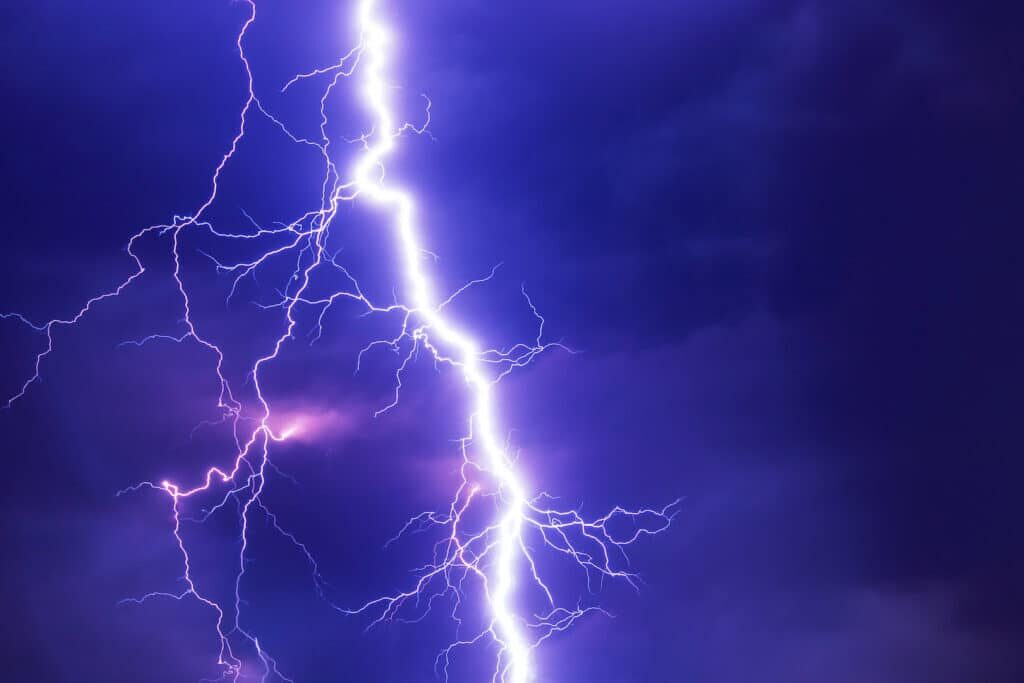
A new study revealed that the eruption created a "supercharged" thunderstorm that recorded the most intense lightning ever. During the eruption, there were approximately 200,000 lightning strikes in the volcanic plume, with the rate reaching a maximum of over 2,600 strikes per minute, according to the experts.
Scientists have now been able to gaze into that plume, plucking out new stages of the eruption's life cycle and obtaining insight into the strange weather it caused thanks to high-resolution lightning data from four sources previously never used together.
Alexa Van Eaton, a volcanologist at the United States Geological Survey who led the study, said, "This eruption triggered a supercharged thunderstorm, the likes of which we've never seen. These findings demonstrate a new tool we have to monitor volcanoes at the speed of light and help the USGS's role to inform ash hazard advisories to aircraft."
"The storm developed because the highly energetic expulsion of magma happened to blast through the shallow ocean. Molten rock vaporized the seawater, which rose into the plume and eventually formed electrifying collisions between volcanic ash, supercooled water, and hailstones. The perfect storm for lightning."
The researchers observed lightning flashes and calculated their heights by combining data from devices that sense light and radio waves. With a peak rate of 2,615 flashes per minute, the eruption generated just over 192,000 flashes and nearly 500,000 electrical pulses. Some of this lightning reached previously unheard-of elevations between 20 and 30 kilometers (12 to 19 miles) up in the Earth's atmosphere.
Van Eaton said, "With this eruption, we discovered that volcanic plumes could create the conditions for lightning far beyond the realm of meteorological thunderstorms we've previously observed. It turns out volcanic eruptions can create more extreme lightning than any other kind of storm on Earth."
"The lightning provided insight into not only the duration of the eruption but also its behavior over time."
"The eruption lasted much longer than the hour or two initially observed. The January 15 activity created volcanic plumes for at least 11 hours. It was only from looking at the lightning data that we could pull that out."
"The researchers saw four distinct phases of eruptive activity, defined by plume heights and lightning rates as they waxed and waned. The insights linking lightning intensity to eruptive activity can provide better monitoring and nowcasting aviation-related hazards during a large volcanic eruption, including ash cloud development and movement."
"It's a significant challenge to get reliable information about volcanic plumes at the beginning of an eruption, especially for remote, submarine volcanoes. Harnessing all the long-range observations, including lightning, improves early detection to keep aircraft and people out of harm's way."
"It wasn't just the lightning intensity that drew us in. She and her colleagues were also puzzled by the concentric rings of lightning centered on the volcano, which expanded and contracted over time. The scale of these lightning rings blew our minds. We've never seen anything like that; there's nothing comparable in meteorological storms. Single lightning rings have been observed, but not multiples, and they're tiny by comparison."
Journal Reference:
Alexa R. Van Eaton, Jeff Lapierre, SOnja A. Behnke et al. Lightning Rings and Gravity Waves: Insights Into the Giant Eruption Plume From Tonga's Hunga Volcano on January 15, 2022. Geophysical Research Letters. DOI: 10.1029/2022GL102341



Reader Comments
to our Newsletter